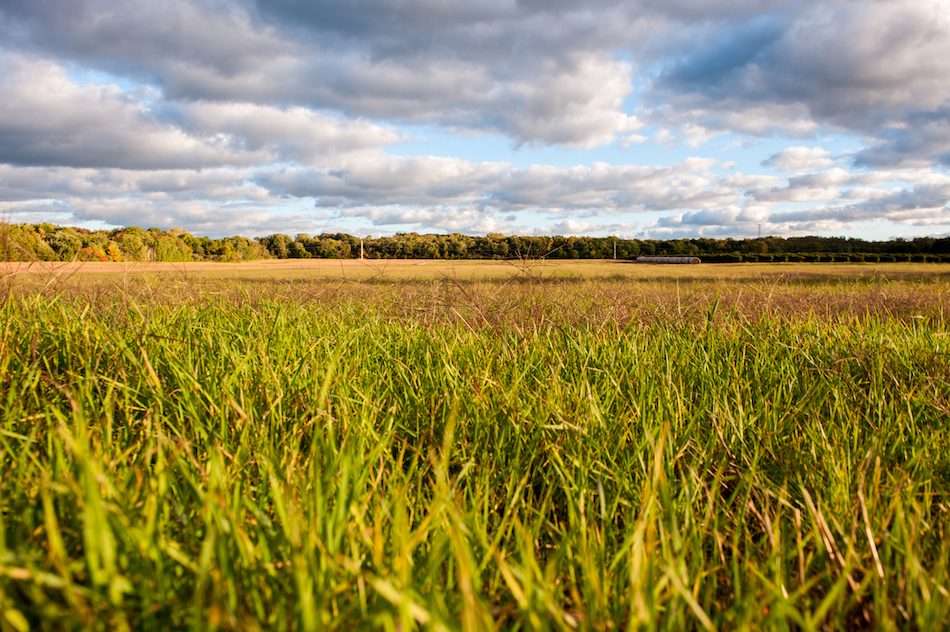In the last decade, cover crops have grown in both interest and acres, yet there is still room for more adoption across Iowa and the region. It is obvious that cover crops require more management though and with that management there will undoubtedly be challenges. In just a few weeks the cycle for cover crop establishment, growth and termination will begin.
Seeding method, time and species all interact with each other, and each decision affects the other. Most Iowans who participate in cover crops are using winter (cereal) rye or oats when overseeding into their standing crop by broadcast with high clearance equipment, or airplane. This is different than interseeding into the standing crop at early vegetative stages. Overseeding into crops nearing maturity is much more reliable than interseeding into vegetative stage crops. Yet there are challenges associated with overseeding.
Cereal rye overseeding into corn when the leaves were firing to the ear leaf in wet fall conditions (photo credit: Mark Licht, Iowa State University).
Timing is everything. Too early and corn and soybean crops shade too much. Rainfall patterns and soil moisture are also critical, as if it is too dry, broadcast seeds will not germinate sitting on the dry soil surface. Overseeding also does not provide uniformity or seed to soil contact that is gained from drill seeding after harvest.
There are definite benefits to overseeding though. The time overseeding occurs is when labor needs are not as demanding, which is usually the last week of August through that first week of September. This assumes there is rainfall in the forecast or ample soil moisture. But is is critical to be flexible, and remember that crop development is strongly influenced by weather conditions. If growing degree days conditions continue to accumulate rapidly, the timeframe could be earlier than the end of August. When corn leaves firing up to the ear leaf or the soybean canopy is starting to yellow is a good indication of when to overseed. Timely rainfall is critical for cover crop germination, so be flexible if conditions are dry and rainfall is not in the forecast. September brings increased rain probabilities, which may lead to more successful cover crop establishment. While larger seeded species such as cereal grains require more moisture for germination, once they have enough moisture, they can establish well in a broadcast situation.
When seeding at an earlier time, overseeded cover crops tend to have more biomass growth in the fall. This is a key to reducing nutrient losses by either leaching or erosion, and if grazing is desired, more biomass results in fewer days of fed hay and grains. This is a drawback to drill seeding, as harvest could delay seeding, which can reduce biomass growth and nitrogen uptake.
When considering seeding rates, it is important to assess soil and weather conditions. Typically, overseeding requires a higher seeding rate – 60 to 70 pounds per acre – than if drill seeding following crop harvest. This higher seeding rate is warranted because lower germination rates associated with dry soil surface conditions, minimal seed-to-soil contact, seed scavenging by bird and rodents, and poor light intensify from crop canopy and residue. An additional seeding rate adjustment should be made based on the percent pure live seed. Low PLS percentages should dictate a higher seeding rate.





Post a comment
Report Abusive Comment